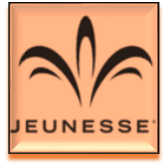營養與健康的關係寄重要又複雜,人類對兩者關系的了解還有很大局限性,尚有很多未知的東西。因此,一些西方國家相關部門每隔一定時間就會根據最新的研究及認識修訂相應的飲食指南,以求對民眾提供科學的健康飲食指導。在眾多飲食指南中影響最大的莫過於每5年修訂一次美國的健康飲食指南。同2010年飲食指南相比,2015飲食指南有許多調整及變動,比如限制糖的攝入,及男性不宜攝入過多動物蛋白質等。但最引人注意的變化是去除了在指南中存在幾十年的對膽固醇每日300毫克以下攝入量的建議。因為這一變動觸動了許多民眾多年來“談膽固醇色變”的理念,因此也引起了很大反響,也被媒體廣泛報道。自然,也難免導致對這一問題認識的混亂。2015年美國健康飲食指南的內容通過多種方式(如摘要,重點總結等)公布。但指南的核心是基於2015年2月份的專家委員會報告形成的。該15人專家委員會報告長達571頁,而網上公布的完整版指南也有167頁之長。
這是膳食指南專家委員會最終報告的網絡版首頁。報告全文共571頁。
這是膳食指南專家15人委員會成員。
這是網絡版,美國2015健康膳食指南首頁 (共167頁數)。
結合自己的解讀及專業知識,我在今年一月寫過一篇題為《美國最新飲食指南為什麽取消對膽固醇的限制?》的博文 http://blog.sina.com.cn/s/blog_8791cb 400102wjb4.html。之後就在沒有關這件事。但最近不斷在微信群及朋友圈里收到關於相關為膽固醇“平反”的微信。這些微信的作者不明,盡管內容也有對指南正確解讀,但我發現許多內容與指南偏差很大,甚至近乎於無知與荒誕。這使我懷疑這些所謂“科普”微信背後有炒作之嫌。作為預防醫學專業人員,我擔心這些不科學的“科普”會誤導民眾,甚至損害民眾健康。使我驚訝的是,這些所謂來源不明的科普竟然也能在許多專業人士群里,反複轉發。為此我再次閱讀,指南及專業委員會報告的中有關膽固醇的相關內容,對相關問題向大家做簡單解釋。為確保科學性,以下內容只是客觀展示目前公認的科學事實,而沒有個人觀點。
1. 膽固醇是什麽? 膽固醇一種類固醇及甾醇,化學式為C27H46O。固態之下是一種無色的結晶。膽固醇廣泛存在於動物體的細胞膜中,同時也是合成幾種重要荷爾蒙及膽酸(膽汁的重要成分)的材料。膽固醇可以分成兩種,低密度脂蛋白膽固醇(LDL-C)及高密度脂蛋白膽固醇(HDL-C)。膽固醇是在1784年在希臘首次被發現的。膽固醇在人體內是一種與生命現象息息相關的重要化合物。它可保持細胞膜的強度及流動性。 除此之外,膽固醇也是生物體合成固醇類激素及膽汁酸的前體分子。膽固醇是一類主要由動物細胞合成的固醇分子。所有種類的動物細胞都可以合成它,人體內源性膽固醇主要在肝臟形成。
2. 膽固醇是膳食中必需營養素嗎?明確答案:不是。 引用《美國飲食指南》第51頁原文“The body uses cholesterol for physiological and structural functions but makes more than enough for these purposes. Therefore, people do not need to obtain cholesterol through foods.” 人體自身可以產生足夠的膽固醇,因此不需要從食物中獲得。類似的內容再次出現在指南的132頁: “Humans are able to synthesize sufUcient cholesterol to meet biologic requirements, and there is no evidence for a dietary requirement for cholesterol.”
3. 血膽固醇升高和心臟病有關嗎? 明確答案:有關。 引用《美國飲食指南》第51頁原文 “Strong evidence from mostly prospective cohort studies but also randomized controlled trials has shown that eating patterns that include lower intake of dietary cholesterol are associated with reduced risk of CVD.” “強有力的隊列研究及臨床實驗證據表明,低膽固醇結構膳食降低心血管發病風險。
4. 美國膳食指南為什麽去除了“每日不超過300毫克膽固醇”的建議? 答:原因有兩個:
1)用指南的原文表述 “In general, foods that are higher in dietary cholesterol, such as fatty meats and high-fat dairy products, are also higher in saturated fats. The USDA Food Patterns are limited in saturated fats, and because of the commonality of food sources of saturated fats and dietary cholesterol, the Patterns are also low in dietary cholesterol. For example, the Healthy U.S.-Style Eating Pattern contains approximately 100 to 300 mg of cholesterol across the 12 calorie levels.” “一般來講,高脂肪膳食中的膽固醇含量也高”,因此在健康膳食中如果限制脂肪攝入,自然膽固醇攝入也就低了。
2)用指南的52頁原文表述 As described earlier, eating patterns consist of multiple, interacting food components and the relationships to health exist for the overall eating pattern, not necessarily to an isolated aspect of the diet. More research is needed regarding the dose-response relationship between dietary cholesterol and blood cholesterol levels. Adequate evidence is not available for a quantitative limit for dietary cholesterol speciUc to the Dietary Guidelines。 “膳食結構要考慮到多種食品的交互影響,而不是只註意食品中獨立的某個方面。還需要更多的研究證明膳食中膽固醇與血膽固醇的劑量反映關系。目前還缺乏合適的證據量化膳食中膽固醇的攝入量”。 很明顯這並不意味著,給膳食中膽固醇開綠燈。
5. 美國膳食指南關於去除每日300毫克膽固醇是如何表述的: “The Key Recommendation from the 2010 Dietary Guidelines to limit consumption of dietary cholesterol to 300 mg per day is not included in the 2015 edition, but this change does not suggest that dietary cholesterol is no longer important to consider when building healthy eating patterns. As recommended by the IOM, individuals
should eat as little dietary cholesterol as possible while consuming a healthy eating pattern. “這一變化並不是說膳食中的膽固醇不再重要。正如,美國醫學研究所(IOM)所建議的那樣,作為健康膳食的一部分應當把膳食來源的膽固醇降的越低越好。”
6. 是沒有“好膽固醇”(HLD),與“壞膽固醇”(LDL)之分了嗎? 不是這樣的。 指南許多地方明確區分好與壞膽固醇。比如指南中32頁不僅對兩者進行明確區分,還明確闡述其分別的作用。“Blood cholesterol—Cholesterol that travels in the serum of the blood as distinct particles containing both
lipids and proteins (lipoproteins). Also referred to as serum cholesterol. Two kinds of lipoproteins are: High-density lipoprotein (HDL-cholesterol)—Blood cholesterol often called “good” cholesterol; carries cholesterol from tissues to the liver, which removes it from the body. Low-density lipoprotein (LDL-cholesterol)—Blood cholesterol often called “bad” cholesterol; carries cholesterol to arteries and tissues. A high LDL-cholesterol level in the blood leads to a buildup of cholesterol in arteries. 不必翻譯了。
7. 成人正常膽固醇範圍是多少? 200 mg/dL (5.2 mmol/L) 以下。但也要考慮,“好膽固醇”(HLD)與“壞膽固醇”(LDL)的比例。
8. 膽固醇過低有害嗎? 膽固醇過高或過低都不好。若血液中膽固醇的總含量過高,則發生心血管疾病的機率會提高。膽固醇過高或過低都會造成健康風險;總膽固醇最佳值是在130mg/dL~200mg/dL之間,低於130mg/dL就需要檢查是否有重病或營養不良、也會增加出血性中風、憂鬱等疾病風險,超過240mg/dL也不健康。
9. 一篇微信講:'美國哈佛大學醫學院40年的觀察結果:越是高飽和脂肪、高膽固醇的飲食方式,體內膽固醇水平越是健康'。是這樣嗎? 答:這是歪曲事實,也可以說是造謠。 幸好這篇微信提供了參考文獻。我查閱了參考文獻,JAMA1987; 257(16):2176-2180. Keaven M. Anderson, PhD; William P. Castelli, MD;Daniel Levy, MD. Cholesterol and Mortality 30 years of follow-up from the Framingham study。
這是原文: 'There is a direct association between falling cholesterol levels over the first 14 years and mortality over the following 18 years (11% overall and 14% CVD death rate increase per 1 mg/dL per year drop in cholesterol levels). Under age 50 years these data suggest that having a very low cholesterol level improves longevity. After age 50 years the association of mortality with cholesterol values is confounded by people whose cholesterol levels are falling--perhaps due to diseases predisposing to death.' 不知是微信作者缺乏基本醫學知識,還是英文太差把意思搞錯了。
醫學文獻浩如煙海,因此如果向可以支持及反對任何一種觀點,都可找到一些“文獻”。但作為科學家應當向大眾展示無偏性的科學總體現狀,而不是斷章取義或移花接木的手法只選擇些和自己想法一致的所謂“證據”。寫醫學科普及報道應當重證據輕觀點,避免拿個別名人來擡高自己文章的可信度,更應避免參雜過多個人觀點。對於有爭議的話題,應當把正方兩方的觀點一起擺出來向大家介紹。
來源: 王培忠博客
婕斯官網 婕斯註冊
以上圖文轉自網絡,版權歸原作者所有,如有侵權請聯系我們刪除!
★婕斯從不宣揚奇跡,我們只相信科學和事實!★







 留言列表
留言列表
 {{ article.title }}
{{ article.title }}